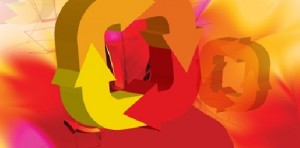Rushton & Suter (2012) learning reflection
 Rushton, I. & Suter, M. (2012). Reflective practice for teaching in lifelong learning. Maidenhead: Open University Press.
Rushton, I. & Suter, M. (2012). Reflective practice for teaching in lifelong learning. Maidenhead: Open University Press.
Focusing on practical applications, UK policies, and detailed cases, the authors see reflection as a cyclic process that allows teachers to think backwards and forwards to improve learners’ experiences and achievement. They define levels of reflection as technical (daily in immediate learning context), organizational (longer-term in management/organization context), and critical (persistent in social/political context). They consider learning contexts as too complex to apply prescriptive, one-size-fits-all solutions and require teachers to integrate theory and practice (including using action research) to make professional judgments. They identify problems as learner-teachers’ reluctance, low confidence, and ignorance of use of reflective processes; teachers’ tick-the-box attitude and shallow results; and management’s intermittent and compulsory use.
This book briefly present several theorists:
– Aristotle describes knowledge as techne (to make something), episteme (theoretical knowledge) and phronesis (practical wisdom).
– Dewey (1933) outlines his five steps of feel difficulty, locate and define, suggest solutions, develop suggestions, and experiment, which leads to accept or reject.
– Gadamer (1980) says that individuals are inseparable from their culture and history, and are unable to be objective.
– Schön (1983)asserts that teaching is messy and complex and not easily aligned to theories. Teachers must combine reflection in action, practical and personal knowledge, and knowing in action.
– Kolb (1984) demands that learning should be relevant and use concrete experience, reflective observation, abstract conceptualization, and active experimentation.
– Boud, Keog, Walking (1985) describe experimental refection as replay experience, reflect on experience, and respond to experience.
– Habermas (1987) seeks a democratic society that accepts all stakeholders voices. He defines human interaction as strategic and instrument interaction (focus on success) or communicative action (focus on understanding).
– Tripp (1993) explores critical incidents, questioning what happened, to who, where, and teachers’ reactions.
– Brookfield (1995) discusses critical reflection, including paradigmatic, prescriptive, and casual assumptions, from the perspectives of self, students, colleagues, and literature.
– Carr (1995) explains critical social science as common-sense conformity, applied science research, practical approaches with reflection/professional judgment, critical approaches to increase rational autonomy).

